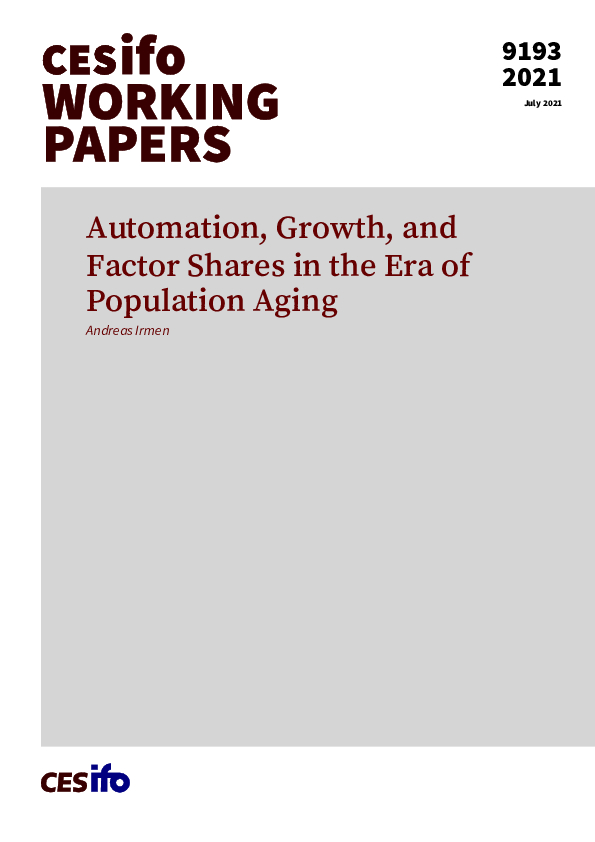Automation, Growth, and Factor Shares in the Era of Population Aging
CESifo, Munich, 2021
CESifo Working Paper No. 9193

How does population aging affect economic growth and factor shares in times of increasingly automatable production processes? The present paper addresses this question in a new macroeconomic model of automation where competitive firms perform tasks to produce output. Tasks require labor and machines as inputs. New machines embody superior technological knowledge and substitute for labor in the performance of tasks. Automation is labor-augmenting in the reduced-form aggregate production function. If wages increase then the incentive to automate becomes stronger. Moreover, the labor share declines even though the aggregate production function is Cobb-Douglas. Population aging due to a higher longevity reduces automation in the short and promotes it in the long run. It boosts the growth rate of absolute and per-capita GDP in the short and the long run, lifts the labor share in the short and reduces it in the long run. Population aging due to a decline in fertility increases automation, reduces the growth rate of GDP, and lowers the labor share in the short and the long run. In the short run, it may or may not increase the growth rate of per-capita GDP, in the long run it unequivocally accelerates per-capita GDP growth.
Fiscal Policy, Macroeconomics and Growth
Economics of Digitization